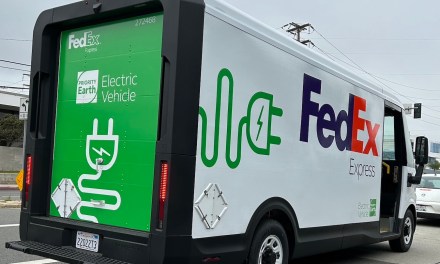There is a tipping point for electric vehicle adoption, one that many industry experts and researchers have predicted could happen once 5 to 10 percent of new car sales are fully electric. And it seems that moment has finally arrived in the United States. Last year, the nation reached 5 percent of all new cars sold being electric, and that figure increased to 7 percent earlier this year. But while it seems we are on the cusp of an electric takeover, a hesitant American public and inadequate charging infrastructure could still slow the EV market down.
The concept of a magic tipping point for electric vehicle adoption has been talked about for years, with researchers predicting that once EVs reach a certain percentage of sales, they will take off and become the new norm. Evidence from Norway, where EVs are already 70% of new car sales, supports this theory. The same has happened in the Netherlands and Iceland, where the EV market has reached around 10% and 20% respectively. However, it is important to recognize that each country’s journey towards a new norm is unique and will be affected by their respective infrastructure, incentives, and cultural attitudes.
JD Power recently reported on this within the context of its article America Grows Increasingly Divided on EV Adoption
2035 Forecast Puts California EV Share at 94%, Michigan, not So Much
J.D. Power has just introduced a new EV Retail Share Forecast, which captures granular EV sales, consideration, pricing, infrastructure growth and other census and demographic factors to project state-by-state EV adoption rates through 2035. Updated twice per year, the forecast projects EV adoption rates by segment by state and designated market area (DMA) and offers insights into the specific variables contributing to projected growth rates.
At a nationwide level, the EV Retail Share Forecast anticipates a baseline estimate of 70% EV market share by 2035. In line with the state-level trends discussed above, however, those projections vary considerably by state. California, for example, which currently has the highest EV adoption rate in the nation, is projected to reach 94% market share by 2035. North Dakota, by contrast, which currently has the lowest EV adoption rate, is projected to have a 19% EV market share by 2035. Similarly, South Dakota is projected to reach just 35% share and Michigan is projected to reach 41% share by 2035.

In the United States, while the EV market is still in its infancy, the potential to reach the tipping point is significant, despite the red state/blue state divide in the United States.

Factors such as decreasing battery costs, improving charging infrastructure, and the increasing range of many electric vehicles are making them a more attractive option for buyers. The Tesla Model 3 and other affordable electric cars have been welcomed by the American public, and electric vehicle sales increased by 80% in the United States in 2018. With a growing interest from mainstream consumers who are looking for a good deal, it is likely that electric vehicles will continue to grow in popularity in the coming years.
However, there are still challenges that need to be addressed to ensure the tipping point is not held back. According to a Washington Post-University of Maryland poll, nearly half of adults in the US prefer to own gas-powered cars or trucks. The hesitancy to switch to EVs could be due to a lack of understanding of the benefits of electric vehicles or issues regarding driving range, charging infrastructure, and affordability. Public perception on EVs will need to shift in order for EVs to become the new norm. Promoting the benefits of EVs such as lower costs of operation and maintenance and contributing to a greener environment can only help with this shift.
The United States is on the verge of the tipping point for electric vehicle adoption, where mainstream consumers will look to purchase electric vehicles over traditional gas-powered vehicles. While progress has been made, there are still challenges that need to be addressed to ensure the magic tipping point is not held back. Promoting the benefits of electric vehicles, improving charging infrastructure, and removing barriers to affordability will all contribute to increasing EV sales. The potential for a greener future is within reach, and we can only hope to see more and more consumers switch to electric vehicles as awareness and technology improve.






